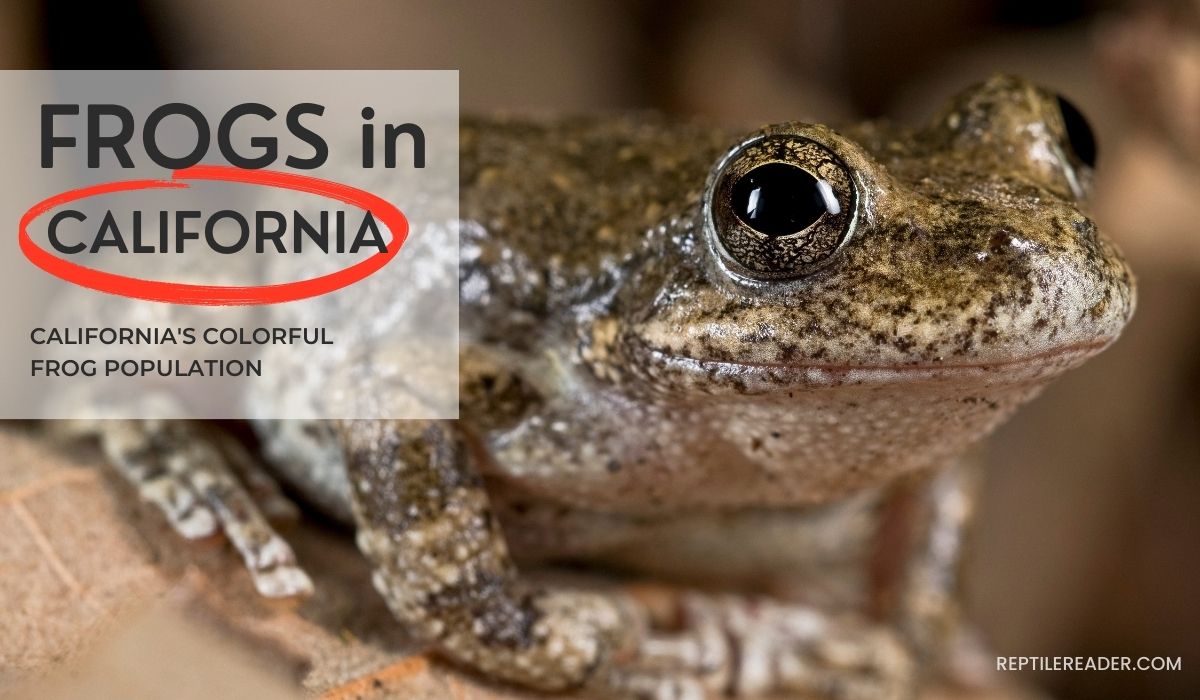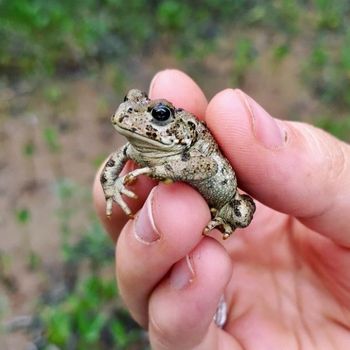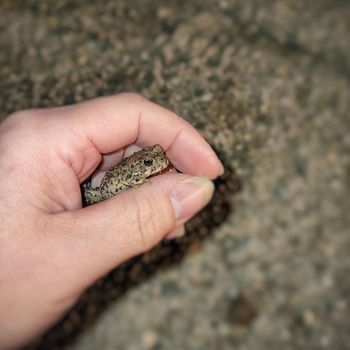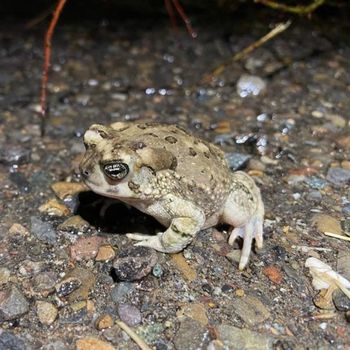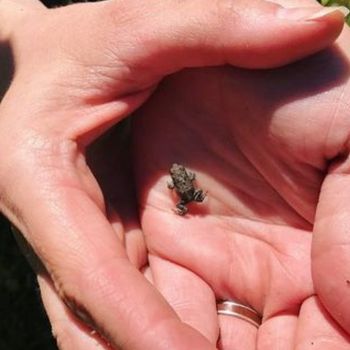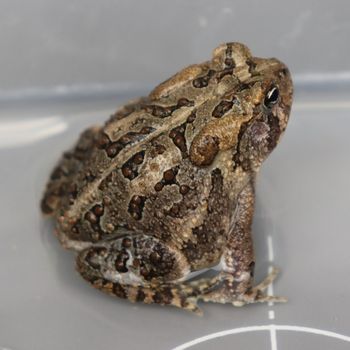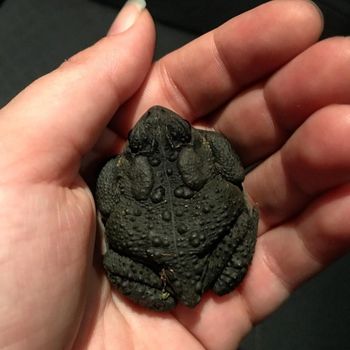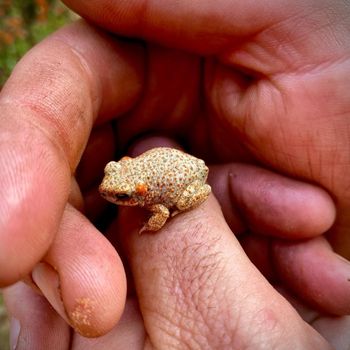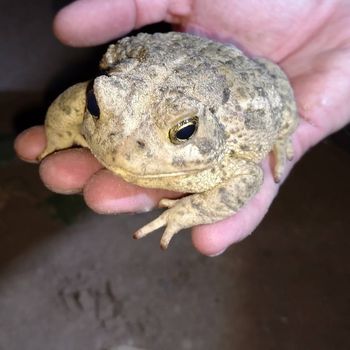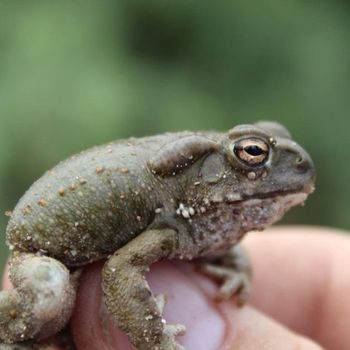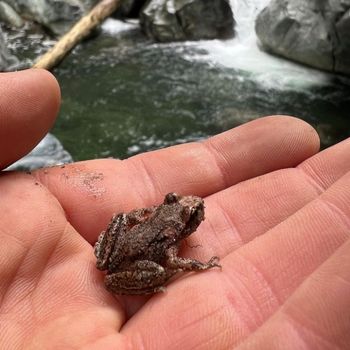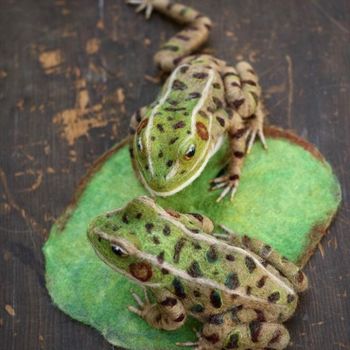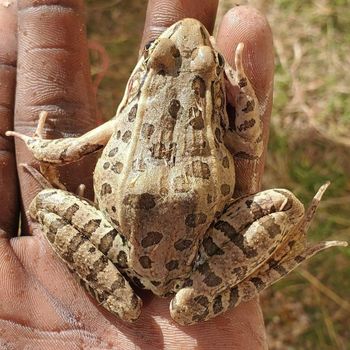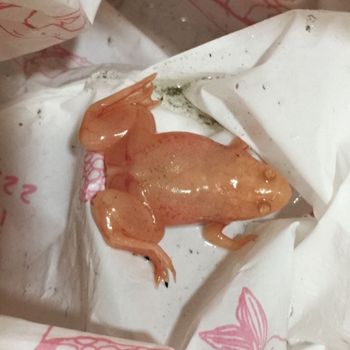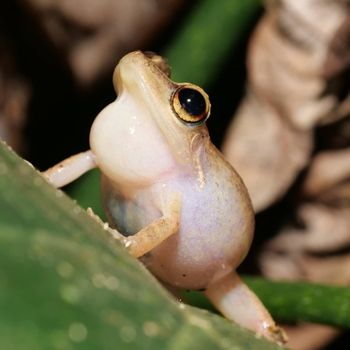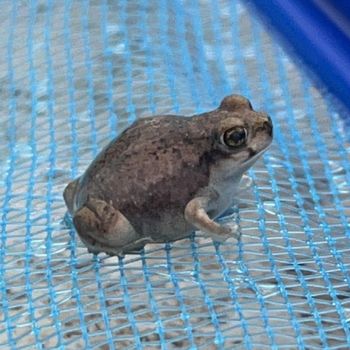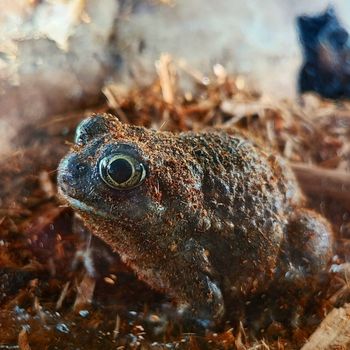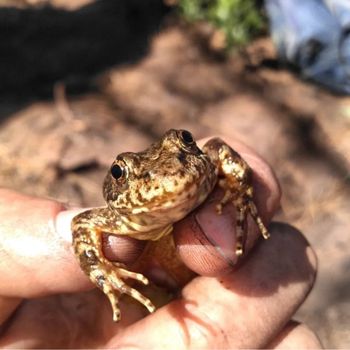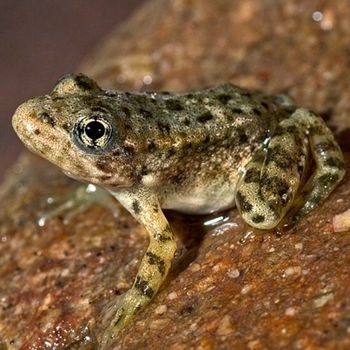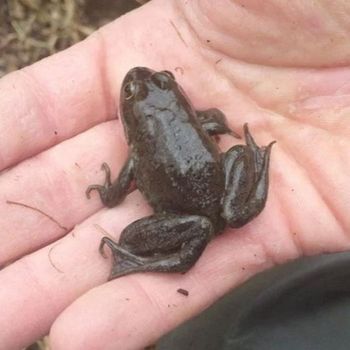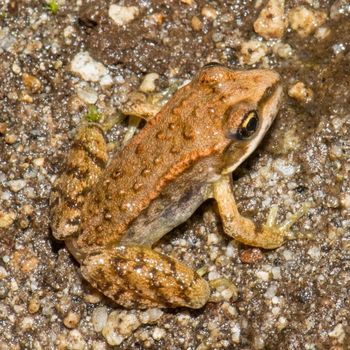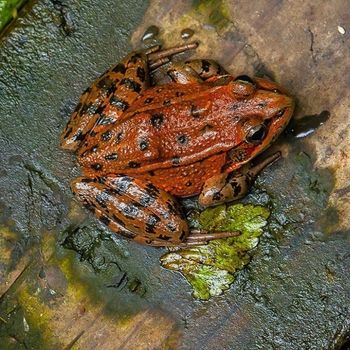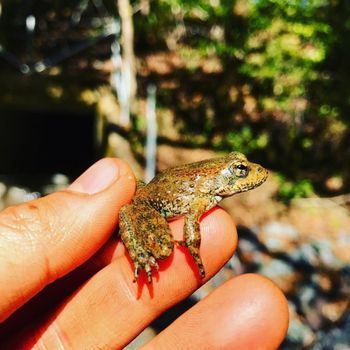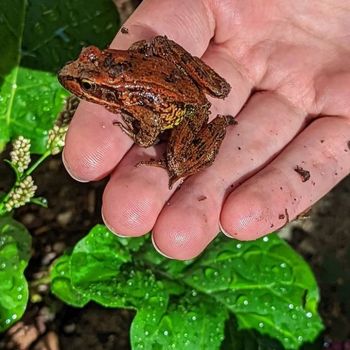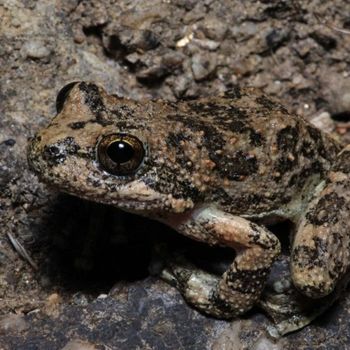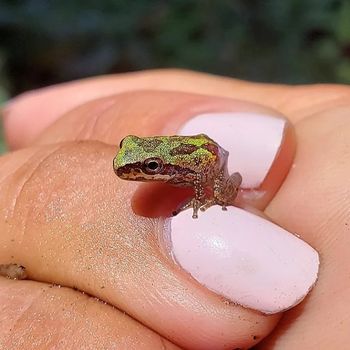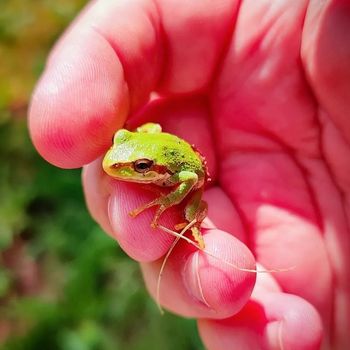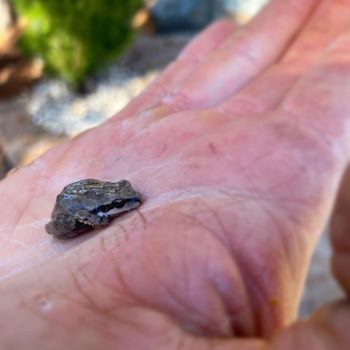Frogs in California: California’s Colorful Frog Population
Are you aware of how many amazing species of frogs call California their home? You might be surprised to find out that there are 33 different species hopping across the Golden State!
From vibrant tree frogs to mysterious spadefoot toads, California has a diverse array of these fascinating amphibians. Whether you’re a curious nature lover or die-hard herpetologist, keep reading to discover some of the hopping-est frog species inhabiting California.
So, let’s dive into this exciting world of California frogs and learn more about these unique creatures. Hop on this journey with us as we explore the incredible variety of species that can be found right here in our own backyard.
| # | Name | Details | Image |
| 1 | Boreal Toad (Anaxyrus boreas) |
| 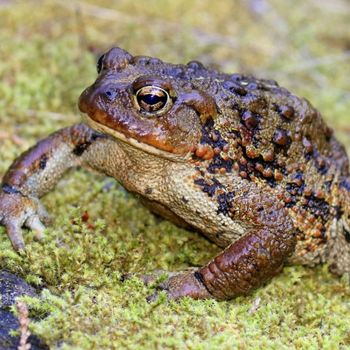 |
| 2 | California Toad (Anaxyrus boreas halophilus) |
| 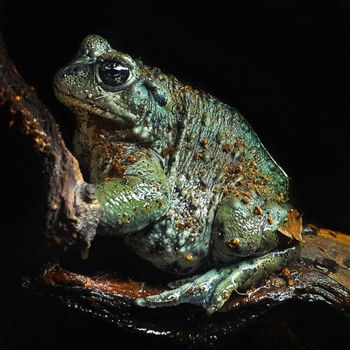 |
| 3 | Arroyo Toad (Anaxyrus californicus) |
| 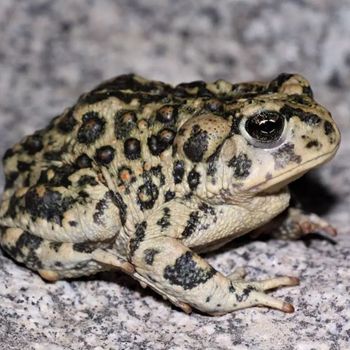 |
| 4 | Yosemite Toad (Anaxyrus canorus) |
| 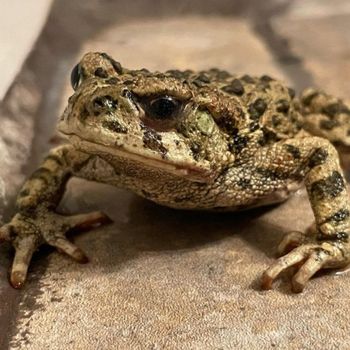 |
| 5 | Great Plains Toad (Anaxyrus cognatus) |
| 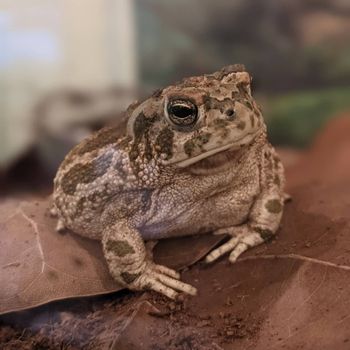 |
| 6 | Black Toad (Bufo melanostictus) |
| 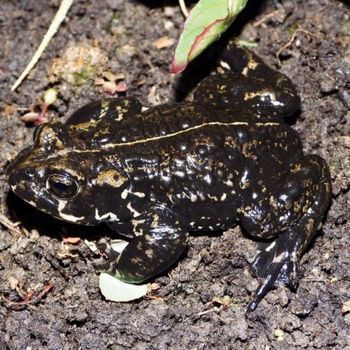 |
| 7 | Arizona Toad (Anaxyrus microscaphus ) |
| 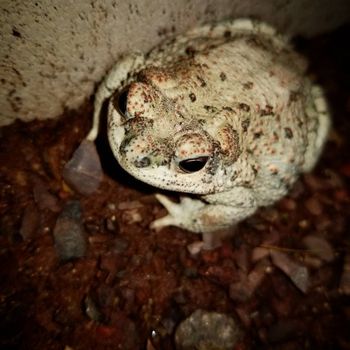 |
| 8 | Red-spotted Toad (Anaxyrus punctatus) |
| 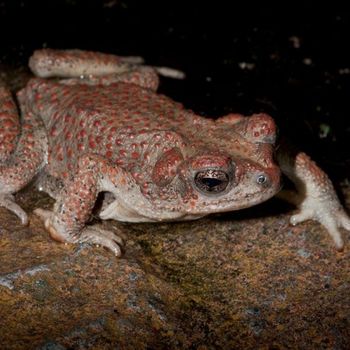 |
| 9 | Rocky Mountain Toad (Anaxyrus woodhousii) |
| 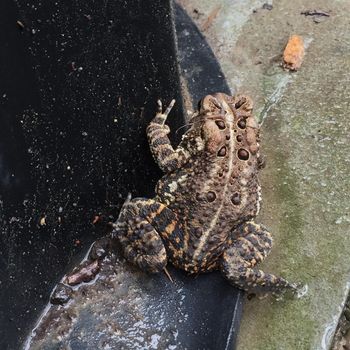 |
| 10 | Sonoran Desert Toad (Incilius alvarius) |
| 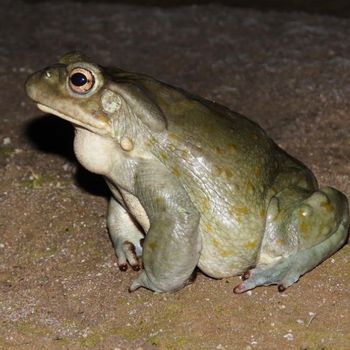 |
| 11 | Coastal Tailed Frog (Ascaphus truei) |
|  |
| 12 | Lowland Leopard Frog (Lithobates yavapaiensis) |
| 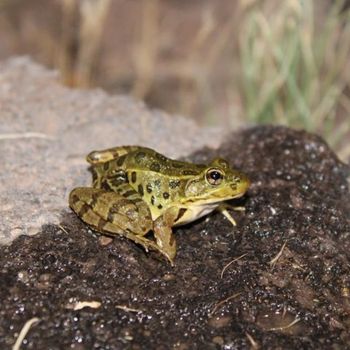 |
| 13 | Northern Leopard Frog (Rana pipiens) |
| 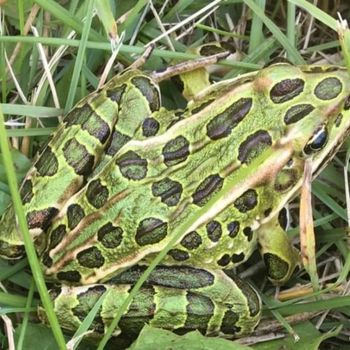 |
| 14 | Southern Leopard Frog (Lithobates sphenocephalus) |
| 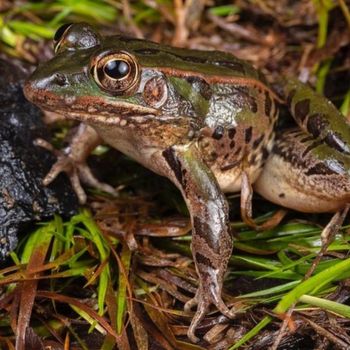 |
| 15 | Rio Grande Leopard Frog (Lithobates berlandieri) |
| 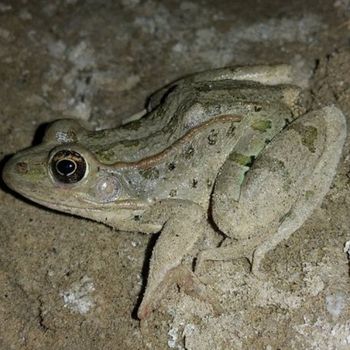 |
| 16 | American Bullfrog (Lithobates catesbeianus) |
| 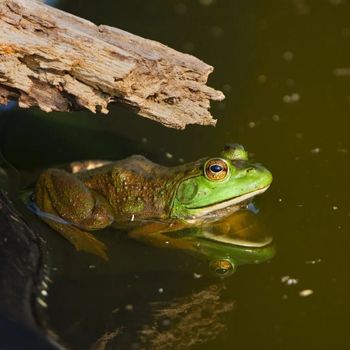 |
| 17 | African Clawed Frog (Xenopus laevis) |
| 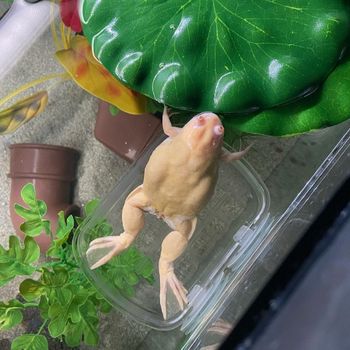 |
| 18 | Common Coqui Frog (Eleutherodactylus coqui) |
| 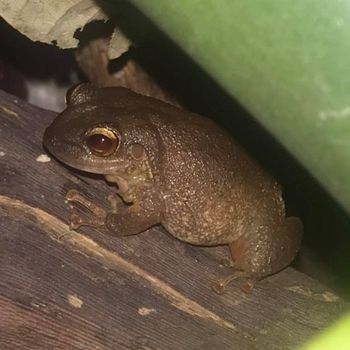 |
| 19 | Western Spadefoot (Spea hammondii) |
| 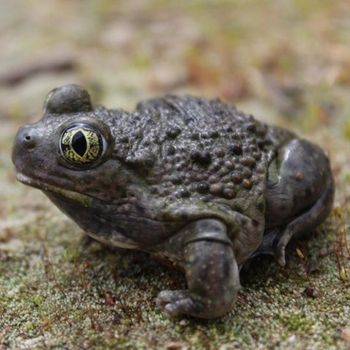 |
| 20 | Couch’s Spadefoot Toad (Scaphiopus couchii) |
| 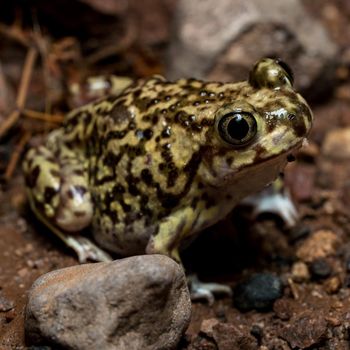 |
| 21 | Great Basin Spadefoot Toad (Spea intermontana) |
| 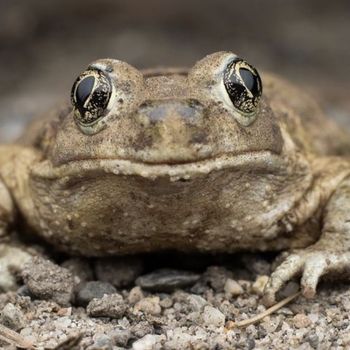 |
| 22 | Sierra Nevada Yellow-legged Frog (Rana sierrae) |
|  |
| 23 | Southern Mountain Yellow-legged Frog (Rana muscosa) |
| 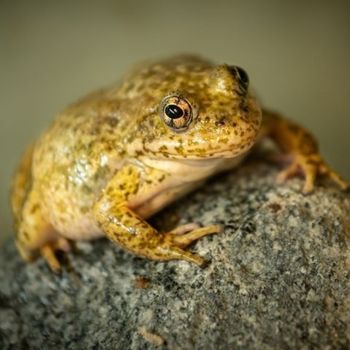 |
| 24 | Oregon Spotted Frog (Rana pretiosa) |
| 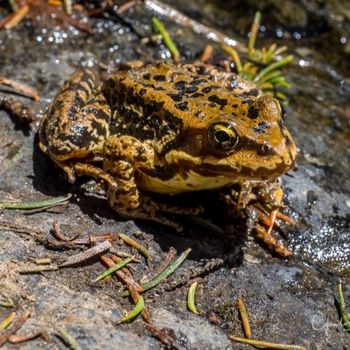 |
| 25 | Columbia Spotted Frog (Rana luteiventris) |
| 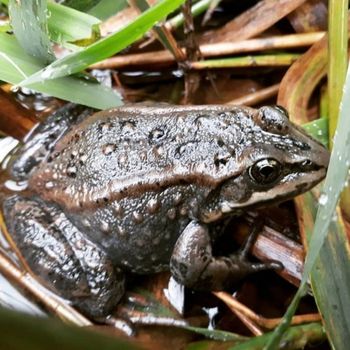 |
| 26 | California Red-legged Frog (Rana draytonii) |
| 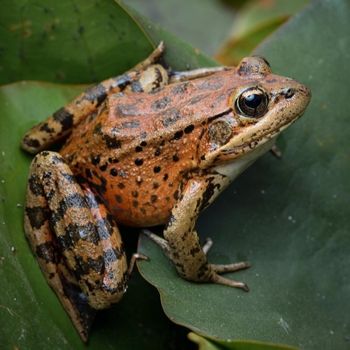 |
| 27 | Cascades Frog (Rana cascadae) |
| 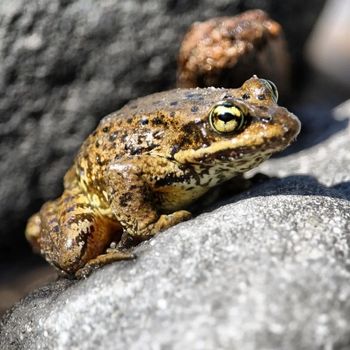 |
| 28 | Foothill Yellow-legged Frog (Rana boylii) |
| 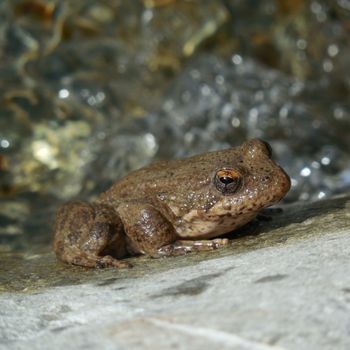 |
| 29 | Northern Red-Legged Frog (Rana aurora) |
| 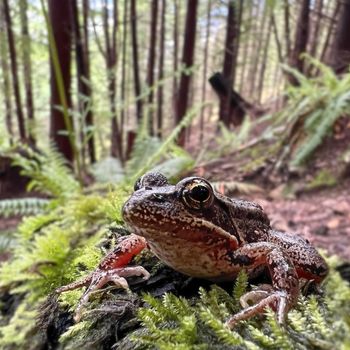 |
| 30 | California Tree Frog (Pseudacris cadaverina) |
| 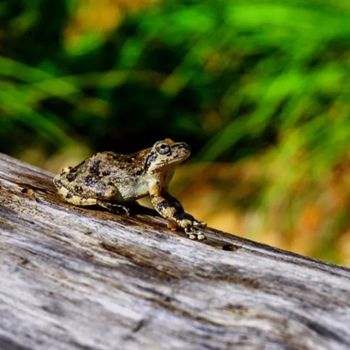 |
| 31 | Baja California Tree Frog (Pseudacris hypochondriaca) |
| 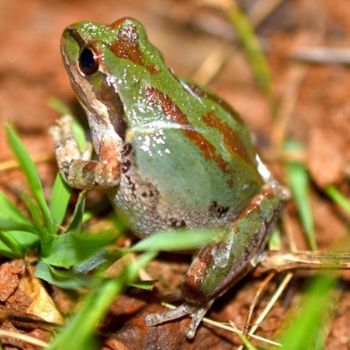 |
| 32 | Pacific Tree Frog (Pseudacris regilla) |
| 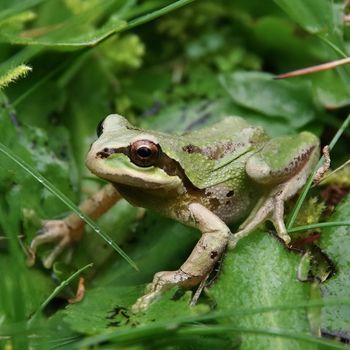 |
| 33 | Sierran Tree Frog (Pseudacris sierra) |
| 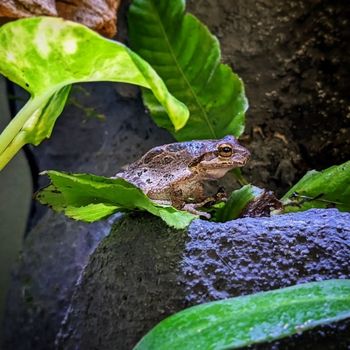 |
Are the Types of Frogs Found in California Representative of the Frog Population Across the USA?
California is home to a variety of frog species, including the popular Pacific Tree Frog, but its unique climate and ecosystems mean it’s not fully representative of frogs in usa. Other regions, such as the Southeast, host different species like the American Bullfrog, highlighting the diverse frog populations across the country.
How Do the Frog Populations in Nevada and California Differ in Terms of Colors and Sounds?
Frogs in nevada tend to have more muted color patterns, often blending with the arid environment. In contrast, frogs in California display a wider range of colors due to the diverse habitats. Additionally, the calls of Nevada’s frogs are typically simpler, while California’s frogs produce more complex and varied sounds.
33 Frog Species You Can Find in California
Get ready to dive deep into the lives of 33 incredible frog species that call California their home, showcasing their unique adaptations and remarkable behaviors.
1. Boreal Toad
- Scientific Name: Anaxyrus boreas
- Common Name: Boreal toad
- Size: 2-5 inches (5-13 cm)
- Color & Pattern: Brown or green with darker spots, white or cream underbelly
- Natural Habitat: Montane forests, meadows, alpine tundra
- Geographic Range: Western north america (alaska, canada to mexico)
- Diet: Insects, spiders, worms, small invertebrates
- Reproduction: Breeds in shallow freshwater habitats, lays eggs in strings
- Vocalization: Males make a faint chirping call during breeding
- Adaptation: Cold-tolerant, resistant to dehydration, characterized by wading posture
- Conservation Status: Near threatened
The enchanting Boreal Toad is a small but captivating amphibian dwelling in the montane forests, meadows, and alpine tundra. Spanning only 2-5 inches, their striking external appearance boasts a unique blend of brown or green with darker spots and a contrasting white or cream underbelly that effortlessly captivates spectators.
Their appetite, though petite, is entirely fierce, feasting on insects, spiders, worms, and small invertebrates inhabiting in California. Males are serenaded during breeding season by a soft, faint chirping call, while nearby shallow freshwater habitats become full of burgeoning life as the toads lay their eggs in strings. Their cold-tolerant nature and resistance to dehydration showcase the unyielding resilience of this mesmerizing creature.
Regrettably, the Boreal Toad currently teeters on the brink of endangerment with a “near threatened” status. The spread of chytridiomycosis, a fungal disease, has ravaged these delicate amphibians, prompting reintroduction programs aimed at spurring their revival. These toads stand as a testament to resilience and adaptation, offering endless wonder and intrigue for wildlife enthusiasts.
2. California Toad
- Scientific Name: Anaxyrus boreas halophilus
- Common Name: California toad
- Size: 2-5 inches (5-12.7 cm)
- Color & Pattern: Olive, brown, or gray with dark, irregular blotches
- Natural Habitat: Grasslands, oak woodlands, riparian areas, chaparral
- Geographic Range: Northern baja california, mexico up through central california, usa
- Diet: Insects, spiders, worms, small invertebrates
- Reproduction: Breeds in slow-moving or still water, lays eggs in strings attached to vegetation
- Vocalization: Low-pitched mating call, similar to a cricket’s sound
- Adaptation: Parotoid glands secrete toxin, can inflate themselves for defense
- Conservation Status: Least concern
This petite amphibian ranges from 2-5 inches (5-12.7 cm) in size and boasts a lovely olive, brown, or gray color adorned with dark, irregular blotches. You can find this captivating creature dwelling in grasslands, oak woodlands, riparian areas, and chaparral, stretching from Northern Baja California, Mexico up through central California, USA.
These enigmatic nocturnal beings play a vital role in insect control, dining mainly on insects, spiders, worms, and small invertebrates. During breeding season, they lay their eggs in strings attached to vegetation in slow-moving or still waters. Their distinctive mating call is a low-pitched and enchanting melody, often compared to the sound of crickets.
But beware! The California Toad is not one to be trifled with. Their parotoid glands secrete toxins, and they can inflate themselves as a means of defense. Thankfully, their conservation status is of least concern, giving them plenty of opportunities to thrive and contribute to their ecosystems. So the next time you find yourself enchanted by the nocturnal symphony, remember the mysterious and alluring California Toad.
3. Arroyo Toad
- Scientific Name: Anaxyrus californicus
- Common Name: Arroyo toad
- Size: 2-3 inches (5-7.5 cm)
- Color & Pattern: Dull green, gray or tan with dark symmetrical spots
- Natural Habitat: Riparian habitats, sandy or gravelly streams
- Geographic Range: Southern california, baja california
- Diet: Aquatic invertebrates, insects, larvae
- Reproduction: Breeds in streams, lays eggs in shallow waters attached to vegetation
- Vocalization: Soft, rising whistles by males during breeding
- Adaptation: Nocturnal, burrow during the day, parotoid glands secrete toxin
- Conservation Status: Endangered
At a modest 2-3 inches in size, this petite amphibian boasts a dull green, gray, or tan skin adorned with captivating dark symmetrical spots.
These secretive creatures can be found in the riparian habitats of Southern California and Baja California, where they thrive in sandy or gravelly streams. Their diet consists of aquatic invertebrates, insects, and larvae. The nighttime serenades of soft, rising whistles from the males showcase an intriguing courtship for breeding, with eggs laid in shallow waters attached to vegetation.
Unfortunately, the Arroyo Toad faces many challenges in its survival. As nocturnal beings, they are sensitive to human disturbances. The Arroyo Toad has adapted by burrowing during the day and secreting toxins from parotoid glands for protection. However, these fascinating creatures are now endangered. Their synchronized life cycles have evolved alongside the ephemeral characteristics of the riverine habitats they occupy, making them an essential part of our ecosystem.
4. Yosemite Toad
- Scientific Name: Anaxyrus canorus
- Common Name: Yosemite toad
- Size: 1.4-2.8 inches (3.5-7 cm)
- Color & Pattern: Gray, brown, or dull green with paler underside; dark spots on the back, light band on the dorsal side
- Natural Habitat: Mountain meadows, forests, grasslands
- Geographic Range: Sierra nevada mountains in california
- Diet: Insects, small invertebrates
- Reproduction: Breeds in shallow pools and wet meadows, lays eggs in small strings
- Vocalization: Male call: short trills, chirps, and buzzing sounds
- Adaptation: Tadpoles adapt to cold environments, nighttime foraging to avoid predation
- Conservation Status: Endangered
Donning a captivating coat of gray, brown, or dull green adorned with dark spots and an alluring light dorsal band, this pint-sized creature measures a mere 1.4-2.8 inches in length. Primarily residing in the mystical mountain meadows, forests, and grasslands of California’s Sierra Nevada Mountains, this fascinating amphibian feasts on insects and small invertebrates to sustain its petite frame.
Remarkable in its reproduction, the Yosemite Toad lays its precious eggs in small strings amidst shallow pools and wet meadows. The scene comes to life with the male’s serenade of short trills, chirps, and buzzing sounds echoing through the airways. To adapt to their chilly environment and cleverly avoid predation, the tadpoles embrace nighttime foraging, thriving under the cover of darkness.
Unfortunately, like many extraordinary beings, the Yosemite Toad faces endangerment. However, its diurnal nature during the breeding season and its remarkable camouflage patterns serve as noteworthy adaptations in its fight for survival. It is a creature truly worthy of admiration and protection.
5. Great Plains Toad
- Scientific Name: Anaxyrus cognatus
- Common Name: Great plains toad
- Size: 3-4.5 inches (7.5-11.4 cm)
- Color & Pattern: Green or brown with dark blotches; a white stripe down the center of the back
- Natural Habitat: Grasslands, sagebrush, floodplains
- Geographic Range: Central north america (southern canada to mexico)
- Diet: Insects, spiders, small invertebrates
- Reproduction: Breeds in temporary pools, lays eggs in long strings
- Vocalization: Multi-trill call by males during breeding
- Adaptation: Thick skin to minimize water loss, explosive breeding during rains
- Conservation Status: Least concern
The fascinating Anaxyrus cognatus, commonly known as the Great Plains Toad, boasts a captivating appearance with its distinct green or brown hues and dark blotches adorning its 3-4.5-inch body. This charming creature also features a striking white stripe running down the center of its back, making it a truly captivating sight in the wild.
Roaming across the vast grasslands, sagebrush, and floodplains of Central North America, these captivating amphibians have an insatiable appetite for insects, spiders, and small invertebrates. The alluring melodies of their multi-trill calls echo through the air, as males serenade their potential mates during breeding season in temporary pools where they lay their eggs in long strings.
Notable for their thick skin, designed to minimize water loss, the Great Plains Toad adapts to its environment by employing explosive breeding during rains and burrowing in the soil to aestivate during dry periods. With a current conservation status of “Least Concern,” we can continue to marvel at these extraordinary toads and their remarkable abilities.
6. Black Toad
- Scientific Name: Bufo melanostictus
- Common Name: Black toad
- Size: 2-3.5 inches (5-9 cm)
- Color & Pattern: Black with yellow or white spots/patches
- Natural Habitat: Forests, grasslands, and urban areas
- Geographic Range: Southern asia; india, bangladesh, nepal, and sri lanka
- Diet: Insects, spiders, snails, small invertebrates
- Reproduction: Breeds in temporary water bodies, lays eggs in strings
- Vocalization: Absent or weak vocalizations by males during breeding
- Adaptation: Warty skin, can secrete toxic substance
- Conservation Status: Least concern
The elusive Black Toad (Bufo melanostictus) is a fascinating nocturnal amphibian that wanders Southern Asia’s forests, grasslands, and even urban areas by the cloak of the night. Sporting a striking appearance, this charming creature measures about 2-3.5 inches and adorns itself in dark hues, complete with an attractive speckling of yellow or white spots and patches.
In its quest for sustenance, the Black Toad dines on insects, spiders, snails, and other small invertebrates, ensuring that it never goes hungry. This adaptable critter exhibits a unique reproductive behavior, seeking out temporary water bodies to lay eggs in strings. However, the males are not particularly loquacious, only producing weak vocalizations during breeding season.
Overall, the Black Toad has a remarkable ability to adapt, with a warty and toxic skin to aid its survival. Though often found near human habitations, these toads continue to thrive in the wild as nocturnal and crepuscular beings. Currently maintaining a stable population, the conservation status of this captivating toad remains classified as “least concern.”
7. Arizona Toad
- Scientific Name: Anaxyrus microscaphus
- Common Name: Arizona toad
- Size: 1.5-3.5 inches (3.8-8.9 cm)
- Color & Pattern: Light brown or gray with darker spots or patches
- Natural Habitat: Riparian areas, rivers, streams
- Geographic Range: Southwestern united states (arizona, nevada, utah) and northern mexico
- Diet: Aquatic insects, spiders, small invertebrates
- Reproduction: Breeds in shallow water, lays eggs in clusters attached to vegetation
- Vocalization: Males produce soft, low-pitched trilling call
- Adaptation: Parotoid glands secrete toxin, can rapidly inflate themselves
- Conservation Status: Near threatened
Introducing the remarkable Arizona Toad (Anaxyrus microscaphus) – a small yet fascinating amphibian native to the southwestern United States and northern Mexico. Measuring between 1.5 to 3.5 inches in length, this nocturnal explorer adorns a light brown or gray coat with darker spots or patches that perfectly blend into its riparian surroundings.
Utilizing their camouflaged exterior, Arizona Toads prowl through rivers and streams hunting aquatic insects, spiders, and small invertebrates. Male toads serenade mates with soft, low-pitched trilling calls, leading to explosive breeding during monsoonal rainfalls in shallow waters of California. Here, they lay clusters of eggs attached to vegetation, ensuring this near-threatened species can continue to thrive.
Famed for their cunning adaptations, these toads employ parotoid glands that secrete toxins, warding off predators. When threatened, they have the astounding ability to rapidly inflate themselves, further deterring any foes. The enigmatic Arizona Toad proves that, though small in size, it holds a big presence in its riparian domain.
8. Red-spotted Toad
- Scientific Name: Anaxyrus punctatus
- Common Name: Red-spotted toad
- Size: 1.5-3.5 inches (3.8-8.9 cm)
- Color & Pattern: Gray, olive or greenish-brown with red or orange spots
- Natural Habitat: Desert streams, pools, springs, riverbanks
- Geographic Range: Southwestern united states and central mexico
- Diet: Insects, spiders, various arthropods
- Reproduction: Breeds in temporary or seasonal water sources, lays eggs attached to small stones or vegetation
- Vocalization: Short, high-pitched call by males during breeding
- Adaptation: Adapted to arid environments, can survive long periods without water
- Conservation Status: Least concern
This fascinating creature measures between 1.5-3.5 inches and thrives along desert streams, pools, springs, and riverbanks throughout the southwestern United States and Central Mexico.
A master of arid survival, this toad has adapted remarkably well to its dry environment, performing awe-inspiring feats like reabsorbing water from its own urine and enduring extended periods without water. Agile and intelligent, the Red-spotted Toad relies on a diet of insects, spiders, and various arthropods to sustain itself in the state of California.
During breeding season, Red-spotted Toads are often heard serenading their mates with a soft, high-pitched call. They reproduce in seasonal water sources, laying their eggs on tiny stones or vegetation. With a conservation status of “Least Concern” and fascinating interbreeding abilities, these toads will likely charm generations to come.
9. Rocky Mountain Toad
- Scientific Name: Anaxyrus woodhousii
- Common Name: Rocky mountain toad
- Size: 2-5 inches (5-12.7 cm)
- Color & Pattern: Brown, gray, or green with dark spots and a thin, pale stripe down the back
- Natural Habitat: Grasslands, woodlands, chaparral, and desert basins
- Geographic Range: Western north america (great basin to mexico)
- Diet: Insects, spiders, small invertebrates
- Reproduction: Breeds in shallow seasonal pools, lays eggs in loose strings attached to vegetation
- Vocalization: Males make short, low-pitched calls during mating
- Adaptation: Parotoid glands release a toxin, can burrow in the ground
- Conservation Status: Least concern
Spanning a humble 2-5 inches, they flaunt a sophisticated array of brown, gray, or green hues – adorned by dark spots and a subtle pale stripe gracing their backs.
Residing in the rugged terrains of western North America, from the sweeping Great Basin to the sun-drenched deserts of Mexico, the Rocky Mountain Toad thrives in grasslands, woodlands, and desert basins alike. A master of adaptation, this nocturnal creature harbors a stocky body with short limbs suited for an arid lifestyle. Its preference for dining consists of insects, spiders, and other small invertebrates.
Though of least concern in conservation status, the Rocky Mountain Toad boasts fascinating traits such as their ability to burrow and the presence of parotoid glands that release a potent toxin. Being well-adapted to their habitat, these alluring creatures continue to enchant the world with their unique skills, colors, and vocalizations, and flourish in the ephemeral pools where they lay their eggs.
10. Sonoran Desert Toad
- Scientific Name: Incilius alvarius
- Common Name: Sonoran desert toad
- Size: 4-7.5 inches (10-19 cm)
- Color & Pattern: Green or brown with white warts and lighter underbelly
- Natural Habitat: Desert, scrubland, grassland, and riparian areas
- Geographic Range: Southwestern united states and northwestern mexico
- Diet: Insects, small mammals, amphibians
- Reproduction: Breeds in temporary water sources, lays eggs in long strings
- Vocalization: Low-pitched call that sounds like a motorboat
- Adaptation: Secretes toxins from parotoid glands, goes into aestivation during the dry season
- Conservation Status: Least concern
Sporting an enigmatic green or brown hue, adorned with white warts and a lighter underbelly, this fascinating creature can be found roaming the southwestern United States and northwestern Mexico. Ranging from a modest 4 to a striking 7.5 inches in size, the desert toad thrives in diverse environments, such as desert, scrubland, grassland, and riparian areas.
Intriguingly, these toads wait for the arrival of the monsoon season to emerge and feast on delicious insects, small mammals, and fellow amphibians. Their love life is nothing short of remarkable – during breeding, they lay eggs in long strings within temporary water sources. Emitting an unforgettable low-pitched call that sounds uncannily like a motorboat, I. alvarius mesmerizes with its unique vocalizations.
Despite their unassuming appearance, the Sonoran Desert Toad boasts a formidable arsenal of adaptations. They secrete toxins from their parotoid glands and elude danger, all while going into aestivation during the dry season. Curiously, they also produce the potent psychoactive substance, 5-MeO-DMT. Flaunting a conservation status of “Least Concern,” these captivating creatures continue to wander the desert landscapes, enchanting all who encounter them.
11. Coastal Tailed Frog
- Scientific Name: Ascaphus truei
- Common Name: Coastal tailed frog
- Size: 1-2 inches (2.5-5 cm)
- Color & Pattern: Greenish-brown, gray or dark brown with small, irregular spots
- Natural Habitat: Cold, fast-moving streams in forests
- Geographic Range: Western north america (california to british columbia)
- Diet: Aquatic insects, small invertebrates
- Reproduction: External fertilization, male clasps female, deposits sperm on eggs
- Vocalization: Males make feeble clicking noises
- Adaptation: Males have a tail-like extension for transferring sperm, can hold onto females with strong forelimbs
- Conservation Status: Near threatened
Hailing from the mystical wetlands of Western North America, the petite Coastal Tailed Frog (Ascaphus truei) boasts an enchanting appearance. Bedecked in greenish-brown, gray, or dark brown hues, these 1-2 inch amphibians are adorned with small, irregular spots, cleverly camouflaging them amongst the cold, fast-moving woodland streams they call home.
Unlike their fellow frogs, male Coastal Tailed Frogs master the art of seduction with a soulful serenade of feeble clicking noises. Engaging in a delicate dance of external fertilization, males expertly clasp females and deposit their sperm onto newly-laid eggs, aided by their signature tail-like extension and Herculean forelimbs. Their taste for aquatic insects and small invertebrates fuels their vigor in the pursuit of love.
Despite their ancient lineage, dating back over 100 years – earning the title of the oldest known living frog species – the Coastal Tailed Frog’s ethereal presence is near threatened. Resolute in their resistance to time, these captivating creatures continue to inspire the conservation of their habitat to ensure they continue enchanting generations to come.
12. Lowland Leopard Frog
- Scientific Name: Lithobates yavapaiensis
- Common Name: Lowland leopard frog
- Size: 2-4 inches (5-10 cm)
- Color & Pattern: Green or brown with black spots or blotches
- Natural Habitat: Streams, ponds, cienegas, other wetlands
- Geographic Range: Southwestern united states and northern mexico
- Diet: Insects, spiders, aquatic invertebrates, small fish
- Reproduction: Breeds in aquatic habitats, lays egg masses in shallow water
- Vocalization: Distinctive chattering calls and snores by males during breeding
- Adaptation: Aquatic adaptations, able to swim and jump quickly to escape predators
- Conservation Status: Least concern
The Lowland Leopard Frog, scientifically known as Lithobates yavapaiensis, is a petite amphibian measuring 2-4 inches (5-10 cm) in length, adorned with a stunning green or brown hue, beautifully complemented by distinctive black spots or blotches upon their skin. These enchanting creatures inhabit various wetlands such as streams, ponds, and cienegas predominantly in the southwestern United States and northern Mexico, thriving in aquatic realms due to their unique ability to tolerate high temperatures and survive in high-elevation habitats.
Their diet, consisting of insects, spiders, aquatic invertebrates, and even small fish, makes them formidable hunters in their microcosmic world. Driven by their innate nature, they partake in an annual breeding ritual in aquatic habitats, laying their delicate egg masses in shallow waters of California, waiting to welcome their offspring into their watery domain. Males serenade the nightly ambiance with distinctive chattering calls and snores in search of a mate.
Lowland Leopard Frogs have adapted perfectly to their surroundings, gifted with the ability to swim with agility and jump with great speed, enabling them to escape predators in the blink of an eye. Despite encroaching environmental threats, conservationists classify this species as “Least Concern,” showcasing the Lowland Leopard Frog’s resilience and adaptability through time and change.
13. Northern Leopard Frog
- Scientific Name: Rana pipiens
- Common Name: Northern leopard frog
- Size: 2.0-4.3 inches (5.1-11 cm)
- Color & Pattern: Green or brown with dark spots circled by a lighter border
- Natural Habitat: Marshes, swamps, grasslands, wetlands
- Geographic Range: Canada and the united states (alaska to new mexico)
- Diet: Insects, spiders, small crustaceans, other invertebrates
- Reproduction: Breeds in shallow, well-vegetated freshwater habitats, lay eggs in clusters attached to vegetation
- Vocalization: Snore-like call by males during breeding
- Adaptation: Long, powerful legs for jumping, partially webbed hind feet for swimming
- Conservation Status: Least concern
These captivating creatures are perfectly suited for life in marshes, swamps, grasslands, and wetlands, stretching from Alaska to New Mexico in North America. Their partially webbed hind feet allow them to swim gracefully, while their long, powerful legs support impressive jumping abilities.
With a main diet of insects, spiders, small crustaceans, and other invertebrates, these voracious eaters keep their habitats in California lively. During breeding season, these frogs settle in shallow, well-vegetated freshwater habitats, and females lay eggs in clusters attached to vegetation. To attract a mate, male frogs serenade their companions with a unique, snore-like vocalization.
Remarkably, the Northern Leopard Frog is capable of surviving being frozen, an unparalleled adaptation contributing to their classification as “Least Concern” in conservation statuses. However, it is worth noting that habitat loss may lead to a decline in future populations. Overall, these fascinating frogs continue to enchant us with their beauty, resilient nature, and captivating behaviors.
14. Southern Leopard Frog
- Scientific Name: Lithobates sphenocephalus
- Common Name: Southern leopard frog
- Size: 2-3.5 inches (5-9 cm)
- Color & Pattern: Green or brown with dark, round spots and light borders
- Natural Habitat: Marshes, swamps, rivers, agricultural areas
- Geographic Range: Southeastern united states
- Diet: Insects, spiders, small crustaceans, other invertebrates
- Reproduction: Breeds in shallow freshwater habitats, lays eggs in masses
- Vocalization: Low-pitched chuckle or snore-like call by males during breeding
- Adaptation: Powerful legs for jumping, ability to tolerate colder temperatures
- Conservation Status: Least concern
This charming creature displays a captivating green or brown complexion adorned with dark, round spots and light borders. At a petite size of 2-3.5 inches (5-9 cm), they make their homes in marshes, swamps, rivers, and even agricultural areas throughout the southeastern United States.
These curious amphibians have a hearty appetite, indulging in insects, spiders, small crustaceans, and other invertebrates. To expand their family, they breed in shallow freshwater habitats, laying their eggs in mesmerizing masses. You may even hear their low-pitched chuckle or snore-like call emanating from the males as they partake in their breeding rituals.
The Southern Leopard Frog is an agile and adaptable species, boasting powerful legs for jumping and the ability to tolerate colder temperatures. Amazingly, they can even breathe through their skin while hibernating underwater. Currently, these splendid creatures have a conservation status of least concern, but let’s not forget their unique features and crucial role within their ecosystems.
15. Rio Grande Leopard Frog
- Scientific Name: Lithobates berlandieri
- Common Name: Rio grande leopard frog
- Size: 2-3.5 inches (5-9 cm)
- Color & Pattern: Green or brown with dark spots, velvety stripe along back
- Natural Habitat: Streams, ponds, wetlands, semi-aquatic environments
- Geographic Range: Southern and central texas, mexico, arizona, new mexico
- Diet: Insects, spiders, small invertebrates
- Reproduction: Breeds in aquatic habitats, lays eggs in clusters attached to submerged vegetation
- Vocalization: Males produce low-pitched calls during breeding season
- Adaptation: Strong swimmers, able to tolerate brackish water, good climbers
- Conservation Status: Least concern
The Lithobates berlandieri, more commonly known as the Rio Grande Leopard Frog, is a fascinating species that attracts attention with its unique appearance. A moderate-sized frog, measuring 2-3.5 inches (5-9 cm), it boasts a charming green or brown skin adorned with dark spots and a velvety stripe running along its back. This striking design is not only visually stunning, but it allows the amphibian to camouflage itself effectively by changing color slightly.
Residing in the serene habitats of southern and central Texas, Mexico, Arizona, and New Mexico, the Rio Grande Leopard Frog can be found amid the gentle streams, serene ponds, and lush wetlands. This semi-aquatic dweller has an appetite for insects, spiders, and small invertebrates, which it hunts in and around its aquatic abode. When breeding season arrives, males serenade their partners with low-pitched calls and females lay eggs in clusters attached to submerged vegetation.
The Rio Grande Leopard Frog is a true adventurer, skillfully navigating its environment with powerful swimming abilities and impressive climbing skills, even able to tolerate brackish water. This adaptable species is currently listed as “Least Concern” for conservation status, demonstrating its resilience and undeniable charm. The charismatic Rio Grande Leopard Frog is a captivating creature with its enchanting appearance, remarkable adaptability, and intriguing life story.
16. American Bullfrog
- Scientific Name: Lithobates catesbeianus
- Common Name: American bullfrog
- Size: 3.5-6 inches (9-15 cm)
- Color & Pattern: Green to brown with dark spots and patterns
- Natural Habitat: Ponds, lakes, marshes, slow-moving streams
- Geographic Range: Eastern and central united states, canada, mexico, introduced worldwide
- Diet: Fish, crustaceans, insects, small mammals, birds, other amphibians
- Reproduction: Breeds in aquatic habitats, lays eggs in flat surfaces on water
- Vocalization: Deep, low-pitched calls by males during breeding
- Adaptation: Highly adaptable, strong legs for jumping and swimming
- Conservation Status: Least concern
Immerse yourself in the world of the American Bullfrog (Lithobates catesbeianus), a striking amphibian with a size ranging from 3.5 to 6 inches (9-15 cm). Adorned in a rich palette of green to brown, they exhibit dark spots and patterns which serve as excellent camouflage within their habitat. These aquatic creatures can leap and swim with grace and strength, due to their powerful legs.
Dwelling in the eastern and central United States, Canada, Mexico, and various regions around the world, they call ponds, lakes, marshes, and slow-moving streams their home. They satiate their hunger with a diverse diet of fish, crustaceans, insects, small mammals, birds, and other amphibians. The American Bullfrog is even known to be cannibalistic, predating on native species in introduced areas.
During breeding season, male Bullfrogs exclaim deep, low-pitched calls to attract mates, resulting in them laying their eggs in flat surfaces on the water for successful reproduction. Despite being a significant predator, their conservation status remains of least concern and they continue to thrive, showcasing their impressive adaptability. Delve deeper into the world of this fascinating amphibian, and uncover more about its unique quirks and captivating existence.
17. African Clawed Frog
- Scientific Name: Xenopus laevis
- Common Name: African clawed frog
- Size: 4-5 inches (10-12 cm)
- Color & Pattern: Olive green with a creamy white underbelly, mottled patterns
- Natural Habitat: Freshwater habitats, ponds, rivers, marshes
- Geographic Range: Sub-saharan africa
- Diet: Insects, crustaceans, tadpoles, small fish, and aquatic invertebrates
- Reproduction: External fertilization, lays eggs on submerged aquatic plants
- Vocalization: Makes a variety of clicking and chirping sounds
- Adaptation: Fully webbed rear feet, lateral line system, lack of tongue and eyelids
- Conservation Status: Least concern
Meet the fascinating Xenopus laevis, or as it’s commonly known, the African Clawed Frog, an amphibian that wears a striking olive green coat with a creamy white underbelly, adorned in mesmerizing mottled patterns. Measuring in at an impressive 4-5 inches, this aquatic artist finds its home in the freshwater habitats of sub-Saharan Africa, gracefully navigating through ponds, rivers, and marshes.
Adapted to a discerning palate, the African Clawed Frog indulges in insects, crustaceans, tadpoles, small fish, and aquatic invertebrates. While raising their young, these amphibians practice artful external fertilization, laying their precious eggs on submerged aquatic plants of California. As they converse in their underwater world, they enchant listeners with a melodic symphony of clicking and chirping sounds.
Uniquely designed with impressive features such as fully webbed rear feet, a lateral line system, and an absence of tongue and eyelids, the African Clawed Frog is an exceptional creature. Despite having an untroubled conservation status, they are sought after and celebrated as a model organism in scientific research. Astoundingly versatile, they primarily dwell in aquatic environments but can also thrive on land, as long as it’s damp enough.
18. Common Coqui Frog
- Scientific Name: Eleutherodactylus coqui
- Common Name: Common coqui frog
- Size: 1-2 inches (2.5-5 cm)
- Color & Pattern: Brown, gray or green with large, dark spots or blotches
- Natural Habitat: Tropical rainforests, lower altitudes
- Geographic Range: Puerto rico, introduced populations in florida, hawaii
- Diet: Insects, spiders, small invertebrates
- Reproduction: Eggs laid on damp surfaces, direct development without tadpole stage
- Vocalization: Loud, two-note call “ko-kee” by males during breeding
- Adaptation: Efficient climbers, skin absorbs moisture from humidity
- Conservation Status: Least concern
Introducing the charismatic Common Coqui Frog, scientifically known as Eleutherodactylus coqui, flourishing in tropical rainforests within Puerto Rico. These nocturnal creatures, extending merely 1-2 inches, display a captivating blend of brown, gray, or green with large dark spots. Notably, they have proudly established themselves in Florida and Hawaii due to their proficient climbing abilities and potential to absorb moisture from humidity.
Roaming the realms of lower altitudes, these dainty amphibians exhibit a strong appetite for insects, spiders, and other small invertebrates. Remarkably, their reproductive process is unconventional, as their offspring bypass the tadpole stage altogether—eggs are laid on damp surfaces and hatch into miniature frogs. A melodic two-note call of “ko-KEE” echoes through the forest of California, as males serenade their potential mates during breeding season.
The Common Coqui Frog remains an exquisite member of the animal kingdom, blessed with fascinating attributes and adaptations, and is currently deemed of least concern on the conservation scale. Partake in the enchanting symphony of their unique vocalizations or marvel at their intriguing appearances—a testament to the wonders of nature found in the tropics.
19. Western Spadefoot
- Scientific Name: Spea hammondii
- Common Name: Western spadefoot
- Size: 1.5-2.4 inches (4-6 cm)
- Color & Pattern: Variable, usually light gray, brown, greenish, with indistinct dark bands on legs
- Natural Habitat: Vernal pools, grasslands, low elevations
- Geographic Range: Southwestern united states (california, nevada, arizona)
- Diet: Insects, worms, small arthropods, crustaceans
- Reproduction: Breeds in temporary pools, lays eggs attached to vegetation
- Vocalization: Low-pitched snore-like call by males during breeding
- Adaptation: Adapted to burrow in soil to avoid desiccation, can survive long periods without water
- Conservation Status: Least concern
Enter the realm of the Western Spadefoot, a magical creature known as Spea hammondii. About the size of a fingertip, these enchanting miniature amphibians boast a mesmerizing color palette that includes light gray, brown, and greenish hues, elegantly adorned with dark bands on their tiny legs.
Venture to the southwestern United States, where the Western Spadefoot rules over vernal pools and grasslands at low elevations. These diminutive beings dine on a delectable feast of insects, worms, small arthropods, and crustaceans, while enchanting listeners with their low-pitched snore-like serenades during breeding season.
Fear not for these mystical beings, for they are masters of survival with a special adaptation that allows them to burrow in soil to avoid drought. The Western Spadefoot is capable of surviving on a water-free diet for astonishing periods, slumbering safely underground within a cocoon-like structure. With their conservation status labeled as “least concern,” the fascinating legacy of these extraordinary amphibians will continue to thrive.
20. Couch’s Spadefoot Toad
- Scientific Name: Scaphiopus couchii
- Common Name: Couch’s spadefoot toad
- Size: 1.5-3.5 inches (3.8-8.9 cm)
- Color & Pattern: Brown, gray, or green with dark spots or blotches
- Natural Habitat: Deserts, grasslands, sandy soil areas
- Geographic Range: Southwestern united states, central and northern mexico
- Diet: Insects, spiders, small invertebrates
- Reproduction: Breeds in temporary pools after heavy rains, lays eggs in water
- Vocalization: Short, explosive, trilling call by males during breeding
- Adaptation: Spade-like projections on hind feet for burrowing, estivation during dry periods
- Conservation Status: Least concern
A master of camouflage and adaptation, this unique species is woven into the diverse tapestry of deserts, grasslands, and sandy soil areas in the southwestern United States, as well as Central and Northern Mexico.
Devouring a banquet of insects, spiders, and small invertebrates, Couch’s Spadefoot Toad leads a slyly nocturnal lifestyle, emerging from its burrows during the arresting beauty of summer rains. Males court their mates with a short, explosive, trilling serenade during their enchanting breeding rituals in temporary pools created by the season’s downpours. The next generation is then lovingly laid in these transient aquatic nurseries.
Remarkably, this toad-hero can absorb water through its skin, a skill that is harmoniously complemented by spade-like projections on its hind feet for burrowing into the earth during estivation. These beautiful adaptations ensure its survival in often harsh environments. Currently listed as a species of least concern, the mysterious and captivating Couch’s Spadefoot Toad continues to captivate and inspire those lucky enough to encounter it.
21. Great Basin Spadefoot Toad
- Scientific Name: Spea intermontana
- Common Name: Great basin spadefoot toad
- Size: 1.5-3 inches (3.8-7.6 cm)
- Color & Pattern: Green to brown with dark spots, light-colored stripe along spine
- Natural Habitat: Sagebrush, grasslands, desert scrub
- Geographic Range: Southwestern canada, western us
- Diet: Insects, spiders, small invertebrates
- Reproduction: Breeds in temporary pools, lays eggs attached to vegetation
- Vocalization: Males make low-pitched chirping noises during breeding
- Adaptation: Spade-like appendages on hind feet for digging, can secrete toxin from skin
- Conservation Status: Least concern
Donning hues of green to brown, decorated with mysterious dark spots and an elegant light-colored stripe down its spine, this small creature measures just between 1.5-3 inches. Roaming the sagebrush, grasslands, and desert scrub landscapes of California, this petite amphibian can be found spreading its charm throughout the southwestern expanses of Canada and the western US.
Always on the hunt for delicious insects, spiders, and small invertebrates, the Great Basin Spadefoot Toad knows how to survive. But once it’s time for reproduction, this little wonder seeks out temporary pools to lay its eggs, carefully attaching them to nearby vegetation. During the breeding season, males serenade their partners with low-pitched, harmonious chirping noises.
Possessing impressive adaptations, the Spea intermontana is well-equipped for its environment. Its hind feet showcase spade-like appendages for digging, and they can even secrete toxins to discourage predators. This extraordinary toad goes into aestivation during dry periods, shedding its skin in a unique “cocoon” during emergence. With a conservation status of “least concern”, it seems, for now, the enchanting Great Basin Spadefoot Toad is here to stay.
22. Sierra Nevada Yellow-legged Frog
- Scientific Name: Rana sierrae
- Common Name: Sierra nevada yellow-legged frog
- Size: 1.5-3.5 inches (4-9 cm)
- Color & Pattern: Olive-green to yellow, with dark irregularly shaped spots and flecks
- Natural Habitat: Mountainous habitats, near snowmelt-fed lakes and streams
- Geographic Range: California’s sierra nevada mountain range
- Diet: Aquatic and terrestrial invertebrates
- Reproduction: Breeds in slow-moving or still, shallow waters with vegetation, lays eggs in a submerged cluster
- Vocalization: Males produce low-pitched, repeated calls during breeding
- Adaptation: Adapted to cold water habitats, have a longer larval stage
- Conservation Status: Endangered
This olive-green to yellow creature, adorned with dark irregularly shaped spots and flecks, is a modest beauty measuring only 1.5-3.5 inches, which resides near snowmelt-fed lakes and streams amidst the majestic mountains.
Rana sierrae may be small, but it has an appetite for adventure, feasting on aquatic and terrestrial invertebrates alike. This amphibious acrobat lays its eggs in submerged clusters concealed among vegetation, and when the males announce their intentions with low-pitched, repeated calls, it’s a harmonious symphony in slow-moving or still, shallow waters.
Adapted to their chilly, high-altitude abodes, the Sierra Nevada Yellow-legged Frog has a unique elongated larval stage, showcasing its resilience and resourcefulness.
However, these precious gems are endangered jewels of the Sierra Nevada, with two separate populations – northern and southern – facing steep decline due to disease, predation, and habitat degradation. Despite their challenges, Rana sierrae remains a symbol of boundless beauty and perseverance in the natural world.
23. Southern Mountain Yellow-legged Frog
- Scientific Name: Rana muscosa
- Common Name: Southern mountain yellow-legged frog
- Size: 1.5-3.25 inches (3.8-8.3 cm)
- Color & Pattern: Greenish-brown or dark brown with irregular spots or blotches
- Natural Habitat: High-elevation lakes, streams, meadows, and rocky areas
- Geographic Range: Sierra nevada and transverse ranges of california
- Diet: Aquatic insects, larvae, beetles, ants, bees, wasps
- Reproduction: Breeds in shallow, clear water; lays eggs in clusters attached to rocks or vegetation
- Vocalization: Infrequent, low-pitched calls by males
- Adaptation: Camouflage, hibernation in lakes for long periods
- Conservation Status: Critically endangered
Measuring between 1.5-3.25 inches (3.8-8.3 cm), they boast a delightfully diverse color palette, wearing shades of greenish-brown or dark brown adorned with irregular spots or blotches that masterfully blend into their surroundings.
These artistically camouflaged creatures enjoy a varied diet, mostly feasting on aquatic insects, larvae, beetles, ants, bees, and wasps. Rather shy, the males are known to make infrequent, low-pitched calls during mating season. They breed in shallow, clear water where they lay egg clusters, carefully attaching them to rocks or vegetation beneath the surface.
Despite their adaptability to hibernate in lakes for long periods and brilliant camouflage, this fascinating species is sadly critically endangered. With their remarkable sensitivity to environmental changes and potential to live for up to 15 years, the Southern Mountain Yellow-legged Frog is yet another reminder of the delicate balance between life and habitat, captivating the hearts and minds of those fortunate enough to glimpse them.
24. Oregon Spotted Frog
- Scientific Name: Rana pretiosa
- Common Name: Oregon spotted frog
- Size: 1.5-4 inches (3.8-10 cm)
- Color & Pattern: Brown or green with black spots, dark mask over eyes
- Natural Habitat: Wetlands, marshes, slow-moving streams
- Geographic Range: Pacific northwest (california to british columbia)
- Diet: Aquatic insects, small invertebrates
- Reproduction: Breeds in shallow water areas, lays eggs in floating clumps
- Vocalization: Low-pitched, distinctive series of rapid short calls by males during breeding
- Adaptation: Can tolerate low oxygen levels in water, strong leg muscles for jumping
- Conservation Status: At-risk, federally threatened in the united states
Adorned in earthy shades of brown or green and accented with black spots and a mysterious dark mask over its eyes, this charming amphibian ranges from 1.5 to 4 inches in size. Its distinctive low-pitched serenade can be heard resonating throughout the lush wetlands, marshes, and slow-moving streams of the Pacific Northwest, from California all the way up to British Columbia.
A vital member of the aquatic ecosystem of California, the Oregon Spotted Frog has a penchant for devouring aquatic insects and small invertebrates. These nimble jumpers exhibit remarkable adaptations to their environment, including the ability to tolerate low oxygen levels in water and strong leg muscles for making great leaps. When it comes to reproduction, Rana pretiosa stands out from its amphibious counterparts, laying its eggs in floating clumps earlier in spring and exclusively within permanent aquatic habitats.
Despite its incredible adaptability, the Oregon Spotted Frog’s existence now hangs in the balance, classified as at-risk and federally threatened in the United States. It is crucial that we safeguard these unique creatures and their habitats in the face of the many challenges threatening their survival.
25. Columbia Spotted Frog
- Scientific Name: Rana luteiventris
- Common Name: Columbia spotted frog
- Size: 1.5-4 inches (3.8-10 cm)
- Color & Pattern: Black, brown or green with irregularly shaped spots
- Natural Habitat: Wetlands, streams, lakes, ponds
- Geographic Range: Western north america (alaska to nevada)
- Diet: Aquatic insects, spiders, small invertebrates
- Reproduction: Breeds in quiet ponds, lays eggs in clusters attached to vegetation
- Vocalization: Low-pitched, rapid chuckling or clicking call by males during breeding
- Adaptation: Explosive jump for escape, webbing on hind feet for swimming
- Conservation Status: Least concern
From Alaska to Nevada, you’ll find these small amphibians – ranging from 1.5 to 4 inches in size – leisurely residing in wetlands, streams, lakes, and ponds. Their diet primarily consists of aquatic insects, spiders, and other small invertebrates hiding in their watery abodes. Despite their small size, these amphibians play a vital role in maintaining the health of their ecosystems by controlling insect populations. Frogs native to Nevada, in particular, can be found hopping along the edges of both natural and man-made water sources, where they lay their eggs in the safety of still waters. Their presence is often an indicator of a balanced, thriving habitat.
Males of this elusive species serenade their female counterparts with low-pitched, rapid chuckling or clicking calls during breeding. You’ll find their eggs in clusters attached to vegetation within the serene waters of quiet ponds. Keep an eye out for their astonishing explosive jumps for escape, and watch them gracefully swim using the webbing on their hind feet – natural adaptations serving their survival in aquatic habitats.
Did you notice a flash of red or orange on the frog’s belly? That’s a distinctive feature of the Columbia Spotted Frog. Not only visually striking, but these little frogs are also essential to our understanding of wetlands, as they serve as a habitat indicator species. Although their conservation status is currently “least concern,” let’s celebrate and protect these incredible, vibrant creatures and the vital habitats they call home.
26. California Red-legged Frog
- Scientific Name: Rana draytonii
- Common Name: California red-legged frog
- Size: 1.5-5 inches (3.8-12.7 cm)
- Color & Pattern: Olive, brown, or reddish with black spots or blotches
- Natural Habitat: Streams, pools, and ponds within forests, grasslands, and coastal scrub
- Geographic Range: California, southwestern oregon, and northern baja california
- Diet: Aquatic and terrestrial invertebrates, occasionally small vertebrates
- Reproduction: Breeds in aquatic habitats, lays eggs attached to emergent vegetation
- Vocalization: Males produce low-pitched chuckling and tapping sounds during breeding
- Adaptation: Can absorb dissolved oxygen through their skin
- Conservation Status: Threatened
Adorned in captivating hues of olive, brown, or reddish with dazzling black spots or blotches, this beauty gracefully inhabits streams, pools, and ponds within forests, grasslands, and coastal scrub. These charming frogs reside primarily in California, southwestern Oregon, and northern Baja California, with the ability to grow up to 5 inches in length.
Gifted with a captivating low-pitched chuckling and tapping vocalization, the California Red-legged Frog serenades those around it during breeding season. As they stealthily lay their eggs among emergent vegetation within their watery habitats, the frogs bring about a new generation that feeds primarily on aquatic and terrestrial invertebrates, and occasionally, small vertebrates. Cleverly, they have the ability to absorb dissolved oxygen through their skin, a marvel of amphibious adaptation.
Endearingly holding the title as the only frog known to be consumed by Mark Twain’s characters, the California Red-legged Frog’s fascinating skin secretions provide an ingenious form of protection from predators. However, these enchanting amphibians are currently classified as threatened, reminding us of the importance of preserving our natural world and the wondrous creatures that inhabit it.
27. Cascades Frog
- Scientific Name: Rana cascadae
- Common Name: Cascades frog
- Size: 1.5-3 inches (4-7.6 cm)
- Color & Pattern: Brown or green with dark patches or spots
- Natural Habitat: Mountain streams, ponds, wet meadows
- Geographic Range: Northwestern united states (california, oregon, washington)
- Diet: Aquatic insects, beetles, snails, small invertebrates
- Reproduction: Breeds in aquatic habitats, lays eggs in submerged vegetation
- Vocalization: Soft, short calls or chirps by males during breeding
- Adaptation: Freeze-tolerance, hibernate underwater in oxygen-rich habitats
- Conservation Status: Near threatened
Meet Rana cascadae, commonly known as the Cascades Frog, a petite amphibian measuring only 1.5 to 3 inches in length. Adorned with a beautiful brown or green color and intriguing dark patches or spots, these captivating creatures inhabit the breathtaking landscapes of mountain streams, ponds, and wet meadows in the Northwestern United States, gracing the regions of California, Oregon, and Washington.
These tiny marvels have a voracious appetite for aquatic insects, beetles, snails, and small invertebrates. The amorous Cascades Frogs engage in aquatic courtship, with males displaying their charm through soft, short calls or chirps. They reproduce in their beloved water, laying their precious eggs amidst the sanctuary of submerged vegetation. Remarkably, these frogs that call California their home possess freeze-tolerance adaptations and can hibernate underwater in oxygen-rich habitats.
Though classified as Near Threatened, the Cascades Frog serves as an invaluable indicator species, attuning us to the health of their ecosystems. Their sensitivity to temperature changes embodies nature’s whispers, signaling environmental shifts often unnoticed by the human world. These magnificent miniature beings merit our attention, admiration, and protection, teaching us the importance of preserving the delicate balance of our collective home.
28. Foothill Yellow-legged Frog
- Scientific Name: Rana boylii
- Common Name: Foothill yellow-legged frog
- Size: 1.5-3.1 inches (3.8-8 cm)
- Color & Pattern: Light brown or gray with dark spots; yellow undersides of legs
- Natural Habitat: Streams, rivers, and creeks
- Geographic Range: Western north america (california, oregon, and washington)
- Diet: Aquatic insects, spiders, and snails
- Reproduction: Breeds in slow-moving, shallow waters, lays egg masses on submerged rocks
- Vocalization: Males make short, quiet, low-pitched calls during breeding
- Adaptation: Webbed rear feet, flattened body for swimming; dorsolateral ridges for camouflage
- Conservation Status: Near threatened
Meet the Foothill Yellow-legged Frog (Rana boylii), a small but fascinating amphibian mostly found in the western North America region, including California, Oregon, and Washington. Sporting a light brown or gray body adorned with dark spots and distinct yellow undersides on their legs, this frog measures a dainty 1.5 to 3.1 inches (3.8-8 cm) in size, perfectly camouflaged along streams, rivers, and creeks, where it makes its home.
These marvelous little creatures that call California their home rely on aquatic insects, spiders, and snails for nourishment, and breed in slow-moving, shallow waters, laying their egg masses on submerged rocks. The males serenade their mates with short, quiet, low-pitched calls during mating season, while their webbed rear feet and flattened bodies ensure that they are adept swimmers. Taking camouflage a step further, their characteristic dorsolateral ridges help them blend seamlessly into their surroundings.
Despite their intriguing appearance and behavior, the Foothill Yellow-legged Frog’s conservation status is classified as ‘Near Threatened’. These captivating amphibians face significant challenges, with their populations declining due to habitat loss, dams, and climate change. Their struggle highlights the importance of preservation and conservation efforts to ensure these fascinating creatures continue to thrive in their native habitats.
29. Northern Red-Legged Frog
- Scientific Name: Rana aurora
- Common Name: Northern red-legged frog
- Size: 1.5-3.5 inches (4-9 cm)
- Color & Pattern: Brown or reddish-brown with black markings; red or orange underside
- Natural Habitat: Forests, marshes, wetlands, streams
- Geographic Range: Western north america (alaska to california)
- Diet: Insects, spiders, small crustaceans, aquatic invertebrates
- Reproduction: Breeds in shallow, slow-moving water; lays eggs in large clusters
- Vocalization: Weak, low-pitched call by males during breeding
- Adaptation: Good swimming abilities, well-developed toe webbing
- Conservation Status: Near threatened
Its size ranges between 1.5-3.5 inches and its exquisite brown or reddish-brown skin sports intricate black markings with a vibrant red or orange hue on the underside. In the wild, they inhabit forests, marshes, wetlands, and streams across western North America from Alaska to California.
A versatile creature, it feasts on an array of insects, spiders, small crustaceans, and aquatic invertebrates. During mating season, these critters breed in shallow, slow-moving waters where they lay large egg clusters, while males serenade with their weak, low-pitched calls. Superior swimmers, their well-developed toe webbing provides a remarkable advantage.
A sensitive soul with a near-threatened conservation status, the Northern Red-Legged Frog is an indicator species for ecosystem health as it is particularly sensitive to pollution and habitat loss. Their captivating existence provides a unique insight into the delicate balance of nature.
30. California Tree Frog
- Scientific Name: Pseudacris cadaverina
- Common Name: California tree frog
- Size: 1-2 inches (2.5-5.1 cm)
- Color & Pattern: Gray, brown, or green with dark spots or mottling
- Natural Habitat: Streams, moist forests, canyons, coastal scrub
- Geographic Range: Southwestern california and northwestern baja california, mexico
- Diet: Insects, spiders, small invertebrates
- Reproduction: Breeds in slow-moving shallow water, lays eggs attached to vegetation
- Vocalization: Males make soft, duck-like quacking or chuckling calls during breeding
- Adaptation: Adapted to blend with environment, can change color
- Conservation Status: Least concern
Hidden amongst the lush greenery and rocky streams of Southwestern California and Northwestern Baja California, Mexico, lurks the remarkably adaptable Pseudacris cadaverina, or commonly known as the California Tree Frog. Spanning a mere 1-2 inches in size, these tiny marvels are nocturnal masters of camouflage, boasting a range of colors from gray, brown, or green with dark spots or mottling, as well as being able to change their colors to blend seamlessly with their environment.
Thriving in a diverse range of habitats such as moist forests, canyons, and coastal scrubs, the California Tree Frog revels in devouring a delectable diet of insects, spiders, and small invertebrates. With a mighty appetite that rivals their talent for climbing, it’s during breeding season when their soft, duck-like quacking or chuckling calls can be heard as males serenade their partners while laying their eggs in slow-moving shallow water, securely attached to vegetation.
Although currently listed as of least concern in conservation status, this fascinating amphibian boasts other incredible abilities such as being able to regenerate lost limbs, making their presence known to only those attuned to their incredible skills and hidden talents. Making a rare sighting of a California Tree Frog a true treat for those fortunate enough to witness these charming creatures in action.
31. Baja California Tree Frog
- Scientific Name: Pseudacris hypochondriaca
- Common Name: Baja california tree frog
- Size: 1-2 inches (2.5-5 cm)
- Color & Pattern: Green, tan or gray with black or dark brown markings
- Natural Habitat: Freshwater ponds, streams, and riparian habitats
- Geographic Range: Northwestern mexico and southwestern united states
- Diet: Insects, small invertebrates
- Reproduction: Lays eggs in groups or clusters in water
- Vocalization: Male’s breeding call is a series of short, sharp clicks
- Adaptation: Specialized disc-shaped fingertips for climbing and gripping
- Conservation Status: Least concern
Meet the Pseudacris hypochondriaca, commonly known as the Baja California Tree Frog. With its small stature of 1-2 inches and a vibrant display of green, tan, or gray hues coupled with black or dark brown markings, this captivating amphibian is a visual delight. Inhabiting the freshwater realms of northwestern Mexico and southwestern United States, its masterful climbing skills are attributed to its specialized disc-shaped fingertips, designed for gripping onto surfaces.
Adept at blending into their environment, the Baja California Tree Frog can change its color to camouflage with the surroundings. The diet of these dexterous climbers primarily consists of insects and small invertebrates. During mating season, male frogs produce a distinct series of short, sharp clicks as their romantic serenade, enticing female frogs to lay their eggs in clusters within the watery habitats.
Although currently classified as “Least Concern” on the IUCN Red List, the Baja California Tree Frog remains an essential part of the ecosystem. Their playful presence and intriguing adaptations make them not only a fascinating species to observe, but also pivotal in maintaining a balanced and biodiverse habitat.
32. Pacific Tree Frog
- Scientific Name: Pseudacris regilla
- Common Name: Pacific tree frog
- Size: 1-2 inches (2.5-5 cm)
- Color & Pattern: Green, brown, or gray with a dark eye stripe
- Natural Habitat: Woodlands, grasslands, wetlands
- Geographic Range: Western north america (alaska to california)
- Diet: Insects, spiders, small invertebrates
- Reproduction: Breeds in aquatic habitats, lays eggs in clusters attached to vegetation
- Vocalization: Distinctive “ribbit” call by males during breeding
- Adaptation: Can change color depending on environment, good climbers
- Conservation Status: Least concern
These petite amphibians measure a mere 1-2 inches long, and beautifully adorn themselves in shades of green, brown, or gray with a striking dark eye stripe. Agile and adaptable, they thrive in diverse habitats across western North America, from the lush forests of Alaska to the sunny shores of California.
The Pacific Tree Frog’s diet primarily consists of insects, spiders, and small invertebrates. They cherish their role as the “voice of the frog chorus,” and delight in serenading the environment during breeding season with their distinctive “ribbit” calls. When it’s time for reproduction, these fascinating creatures breed in aquatic habitats, laying eggs in clusters carefully attached to vegetation.
Despite their small size, Pacific Tree Frogs flaunt remarkable adaptability. They can change colors depending on their environment, expertly blending in with their surroundings. Adept climbers, they easily ascend trees and shrubs in search of food or safety. With a conservation status of “least concern,” these tiny, talented frogs continue to symbolize the enduring spirit of the American West’s wetlands.
33. Sierran Tree Frog
- Scientific Name: Pseudacris sierra
- Common Name: Sierran tree frog
- Size: 1-2 inches (2.5-5 cm)
- Color & Pattern: Green, grey, or reddish-brown with dark irregular spots
- Natural Habitat: Grasslands, woodlands, wetlands, near streams and ponds
- Geographic Range: Western north america (california, oregon, nevada)
- Diet: Insects, spiders, small invertebrates
- Reproduction: Eggs are laid singly or in small groups in shallow water
- Vocalization: Males emit a nasal, raspy “reek” or “krit” call during mating season
- Adaptation: Excellent camouflage, expandable vocal sac for vocalizations
- Conservation Status: Least concern
Measuring a tiny 1-2 inches, this minuscule master of disguise can change its color between green, grey, or reddish-brown and sports dark irregular spots, expertly blending into its surroundings. With an expansive range spanning California, Oregon, and Nevada, you can find these agile amphibians hopping around grasslands, woodlands, wetlands, and near streams and ponds.
These voracious little creatures feed on a varied diet, including insects, spiders, and other small invertebrates. As for their own life cycle, the Sierran Tree Frog lays its eggs singly or in modest groups submerged in shallow water. Males get quite vocal during the mating season, emitting a nasal, raspy “reek” or “krit” call, thanks to an expandable vocal sac.
Interestingly, Sierran Tree Frogs are quite the survivalists. Besides their adaptive color-changing abilities, they are also known to hibernate under logs or in rodent burrows. Currently, their conservation status is of least concern, which means these fascinating little frogs are thriving and continue to grace the western North American landscape with their presence.
Nearby States:
Final Words
In summary, California boasts a remarkable array of 33 diverse frog species, displaying a kaleidoscope of colors, patterns, and unique adaptations. Embark on a fascinating journey through their habitats, appreciating their distinctive vocalizations, and uncover the secret lives of these magnificent amphibians that grace the state of California.

